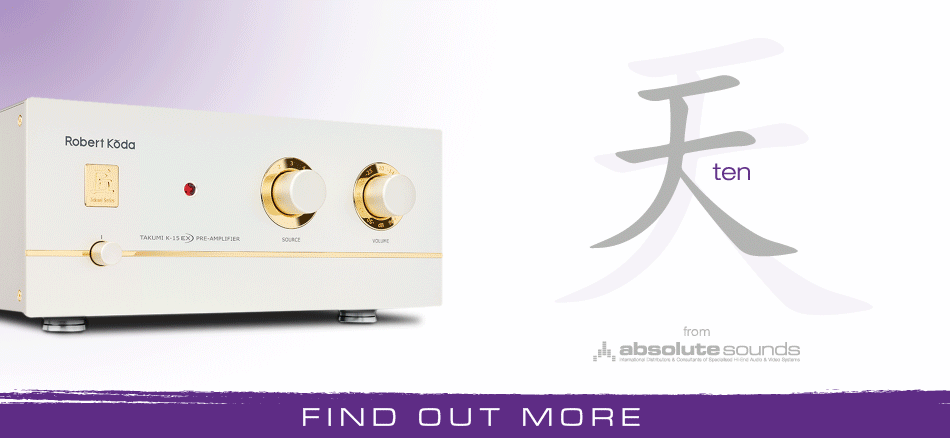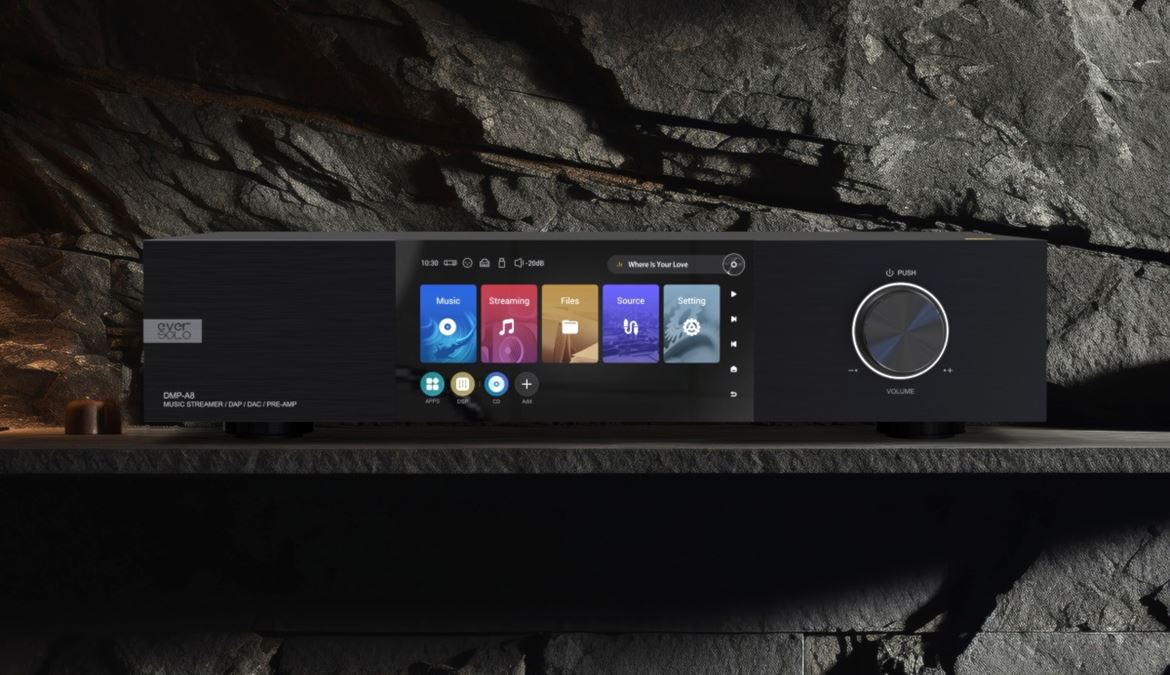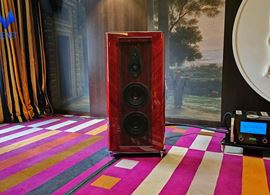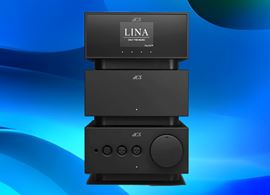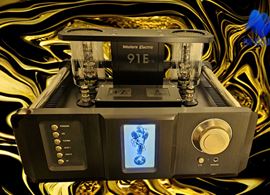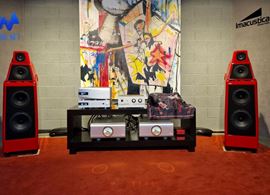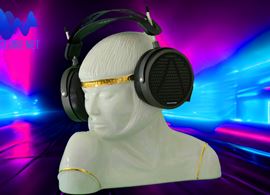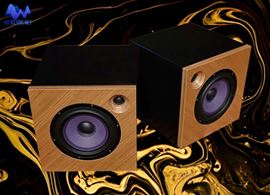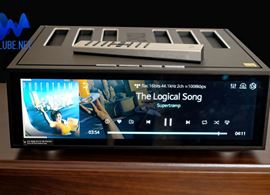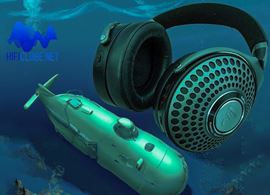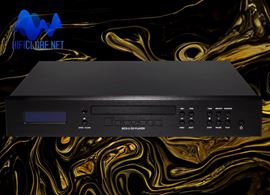The Eversolo DMP A-8, which I'll refer to as the A8 from now on, is a versatile device that can function as a streamer, DAC, DAP and balanced preamplifier with an advanced resistor volume control (R2R).
Alternatively, it can serve as a universal hub for connecting your digital and analogue sources, like an external amplifier, a pair of powered speakers, or even a preamplifier or integrated amplifier, bypassing the volume control to offer maximum flexibility.
The touchscreen display is intuitive and can be mirrored on a mobile phone, tablet, or iPad, in portrait or landscape format (CAST mode) via a dedicated control app. It all works so well that it rivals products that are five times more expensive while costing only €1980.
The range of possibilities is vast, with almost every function or feature imaginable. There are even options that nobody has considered before. But I don’t want to spoil the fun. It's up to you to discover.
I recommend that readers begin by reading my previous review of the Eversolo DMP-A6 Master Edition, which can serve as a guide for this review. The A8 performs all the functions of the A6 and then some, and it does so even better—much better.
The A8 performs all the functions of the A6 and then some, and it does so even better—much better.

The touchscreen display is intuitive and can be mirrored on a mobile phone, tablet, or iPad, in portrait or landscape format (CAST mode) via a dedicated control app.
It appears as though Eversolo carefully read through the plethora of A6 reviews, hopefully mine included, and then skillfully used his technical expertise to design the DMP-A8, throwing down the gauntlet to the reviewers and leaving them bereft of negative arguments.
To be honest, there is not much, if anything, wrong with the A8. So put down your reading now, if you will. Are you looking to buy a streamer/DAC? I would suggest going with the Eversolo DMP-A8. You won't regret it. Period.
However, if you are not yet convinced, please bear with me until the end of this review.
To be honest, there is not much, if anything, wrong with the A8.

Behold the Eversolo DMP-A8 interior: A masterpiece of circuitry design, where technical organization meets artistry. Photo courtesy of Eversolo.
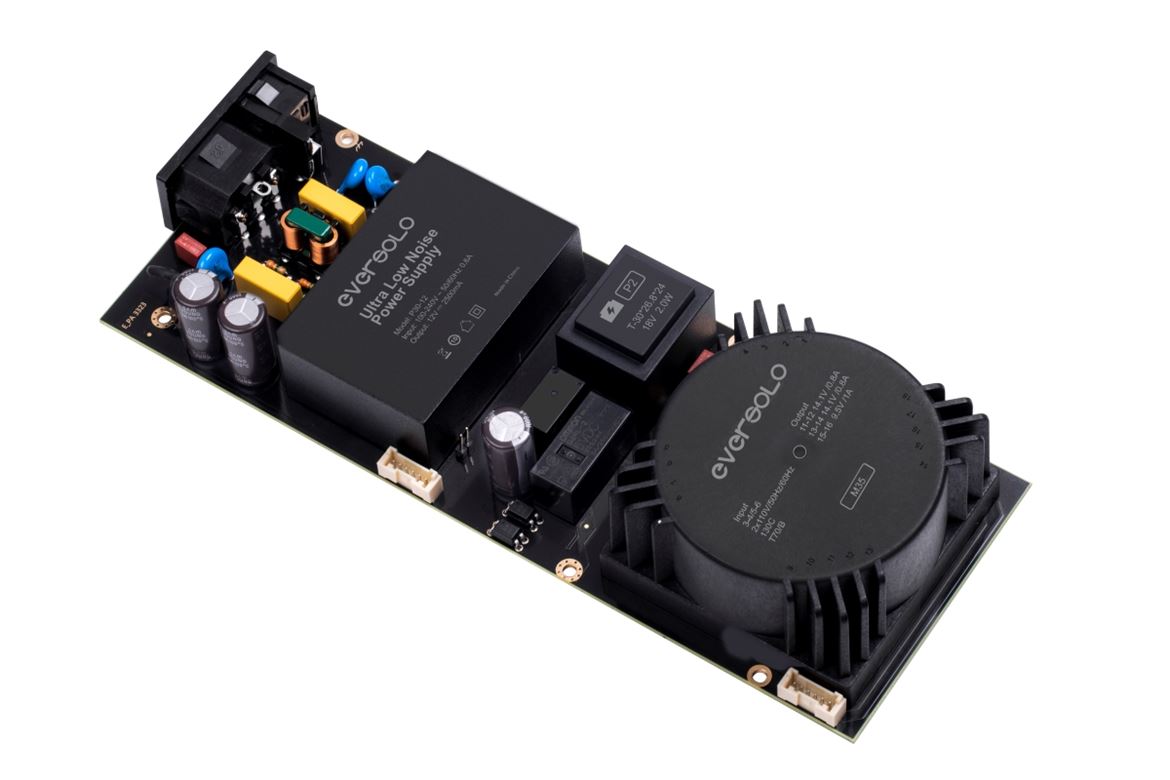
Dual Power Supply: Switched type for digital; and linear for analogue. Photo courtesy of Eversolo.
Double or nothing
The A8 may cost twice as much as the A6, and 700 euros more than the Master Edition, but it offers just as much in terms of component quality (and quantity) and, above all, a performance that is close to the state-of-the-art in both the analogue and digital domains.
One possible way to compare A8 and A6/Master Edition is by identifying their differences and assessing their potential impact on performance.
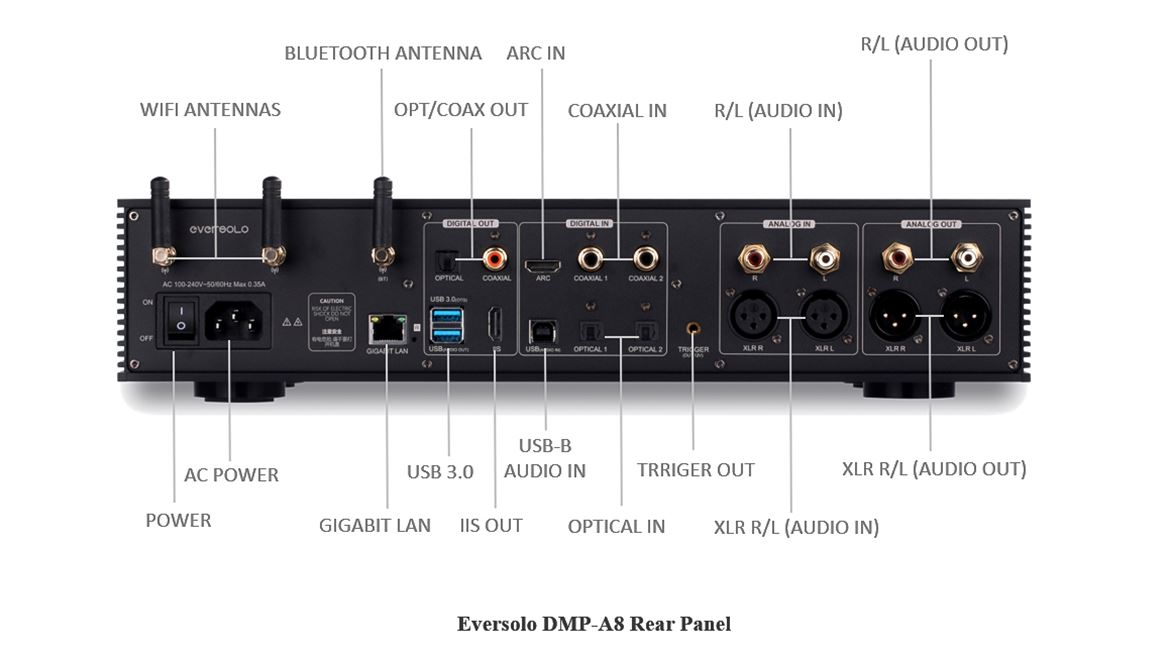
Photo courtesy of Eversolo/Eki Shaw
Main differences:
- The A8's aluminium chassis is 10 cm wider than the A6's, and we'll see why in a moment because it needs room to fit the dual power supplies inside: linear for the analogue circuits and switched for the digital circuits.
- The preamplifier stage is now balanced (XLR inputs and outputs) with 10dB of gain and attenuation by an R2R resistor volume control (you can hear the relays click) regulated by firmware.
- The DAC uses top-of-the-range AK4499EX/AK4191EQ Velvet Sound Verita dual chips and is compatible with DSD512 and PCM 768KHz/32 bit.
- Independent high-precision clocks operating at 45.1584MHz and 49.152MHz respectively for decoding multiples of the 44.1KHz and 48KHz sampling frequencies.
- Digital signal processing (DSP): Parametric Equalisation in digital format for external DAC; and room correction using the internal DAC and analogue outputs. And also: Compressor, High and low pass filters, Loudness enhancement, and Left-right channel delay.
- HDMI IIS output for connection to external DAC supporting resolutions: DSD512 and PCM 768KHz/32 bit.
- Qualcomm QCC5125 audio receiver module compatible with Bluetooth 5.0 (CD quality).
- Dual remote control with infrared and Bluetooth support (volume, source selection and choice of VU meters).
- Devices running Android can supply bit-perfect signals to the internal DAC via the EOS Audio Engine.
- Control App: The app enables you to control all aspects of the EverSolo A8 directly from your phone, tablet or iPad. You can adjust various settings, including:
- Source Input: Easily switch between different audio sources.
- Output Port: Configure the output port for your audio.
- Data Management: Music library, System applications, and menus.
- Volume Settings: Adjust the volume levels to your preference.
- Format and Sampling Rate Display: When the Eversolo decoder is operational, the app’s home page displays essential information such as the audio format and sampling rate.
- Additional Settings: By clicking the gear icon in the upper right corner, you can access more advanced settings and fine-tune your audio experience.
- Touchscreen mirroring: You can duplicate (mirror) the layout on your phone or tablet.
The A8 is compatible with all streaming formats and services (except Chromecast): AirPlay, DLNA, Bluetooth aptX HD, Tidal Connect, plus apps for Tidal (full MQA), Qobuz, Amazon Music, Hiresaudio, Deezer, Radio Paradise (FLAC) and Apple Music, the latter bypassing the Android SRC limitation, in CAST mode.
The A8 is not yet Roon Ready because, according to Eversolo, the certification process has been delayed. You can access it with AirPlay which is AAC only. But there’s a hack to access Roon in almost all its glory with Squeezebox.
Note: Read on, as I’ll explain in a video below how to access Roon via Squeezebox while you wait for certification.
If the inexhaustible wealth of music available via streaming isn't enough for you, you can still play your music stored on a NAS (via Ethernet) or on a hard drive or USB stick (via USB-OTG). You can also connect a CD drive via USB-A to play or rip your entire CD collection to an internal SDD disc of up to 4TB (not supplied). As I understand it, if you have a compatible drive, you can also copy DVD-audio (and BluRay-audio?). The copy is bit-perfect thanks to the error correction mechanism, and all the graphic information (cover, tracks, credits, etc.) is associated with the respective record.
The A8 supports all high-resolution audio formats: DSD512 (.dsf, .dff, .iso, .dst), MQA (files and streaming) and PCM 768KHz/32 bit, including CD-quality formats: FLAC, WAV, APE.
The A8 has so many functions and features that if I list them all, I risk turning this report into a copy of the manual that you must read anyway. More importantly, I'll point out whether the A8 fulfils all the promised criteria. For example, the A6 wasn't compatible with DSD512, even though the manual said it was because the Windows Asio driver that came with it didn't allow it. All this is explained in the DMP-A6 Master Edition test report here.
The Secret Path to Roon
The Eversolo DMP-A8 ticks all the boxes: DSD512, PCM 768KHz/32 bit, MQA 352.8KHz. Except for Roon, which isn't yet certified. But there is a simple hack to access Roon with SqueezeBox.
Here are the steps you need to take while you watch the video above:
- The Roon Core or the PC running Roon must be connected to the same network as the A8 via WiFi or Ethernet.
- Select Streaming on the A8's touchscreen, scroll down to Music Connect and select Squeeze Connect (this feature isn't available in the app).
- The Roon Core or the PC running Roon will be displayed on the screen at the top left. Switch to "On" at the top right.
- Go to Roon and select "Activate Squeezebox" under Audio in Settings.
- If the Squeezebox doesn't connect immediately, switch On and Off repeatedly in Squeeze Connect on the A8 screen until Roon connects.
- In Roon, go to Settings/Audio and select Eversolo SqueezeBox.
- Click on the gear icon for definitions and select DoP for DSD and Decoder and Renderer for MQA. Skip FLAC compression. Save.
- You can now use Roon normally with the A8 while you wait for the official certification, albeit with downsampling to DSD64 and PCM 192KHz, still with MQA on Tidal up to 352.8KHz.
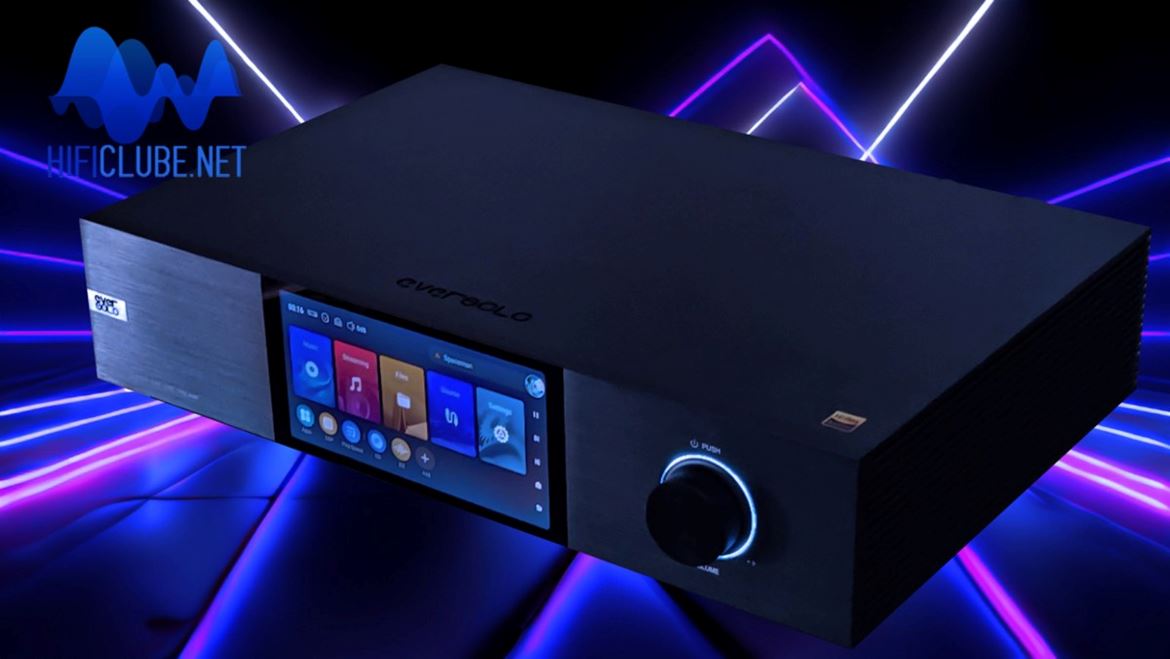
Audio performance
Now it’s time to dive into the acoustic characteristics of the A8. Is it so much better than the A6 that it justifies almost double the price? I’ve had the opportunity to examine measurements proving that the A8 is entirely transparent to the audio signal. Whether functioning as a streamer, DAC, or preamp, the A8, in theory, has no inherent sound as it merely reproduces the input signals as they were recorded.
This holds unless you utilise the EQ and DSP functions or indulge in comparing the coefficients of the six available filters. These filters' frequency response can change depending on how they work in the time domain. This depends on whether they are linear-phase (keeps the phase of input components the same) or minimum-phase (minimises phase shift) and whether they are sharp or slow types.
For instance, if you prefer a more neutral sound, the Sharp roll-off filters might be your best bet. If a sweeter, rounder sound is what you’re after, consider the Slow roll-off filters, particularly with high-resolution files above 96 KHz. Although the difference between them might be measurable, it’s doubtful you’ll perceive much of an audible distinction.
The A8 lacks a headphone output and an integrated amplifier. (Will the future A10 have both? I wonder). Therefore, I had to connect it to an external Advance Paris Classic A12 amplifier (from the same distributor, Delaudio), and this, in turn, to a pair of Quad Revela 1 speakers. This setup inevitably became part of the equation and consequently influenced the A8’s audio performance.
Initially, I attempted to connect the A8 directly (via RCA output) to a pair of Focal active desktop speakers, just for fun. However, I found the sound more appealing with the Classic A12 and the Revela 1s. Signal was sourced from the A8’s balanced output with volume control bypass.
Over several weeks, I took enormous pleasure from listening to hundreds of tracks, both from streaming services such as Tidal and Qobuz and from my extensive collection of high-resolution files stored on a hard drive connected to the A8 via USB-B or a PC with the JRiver32 media player installed. The results were consistently astounding.
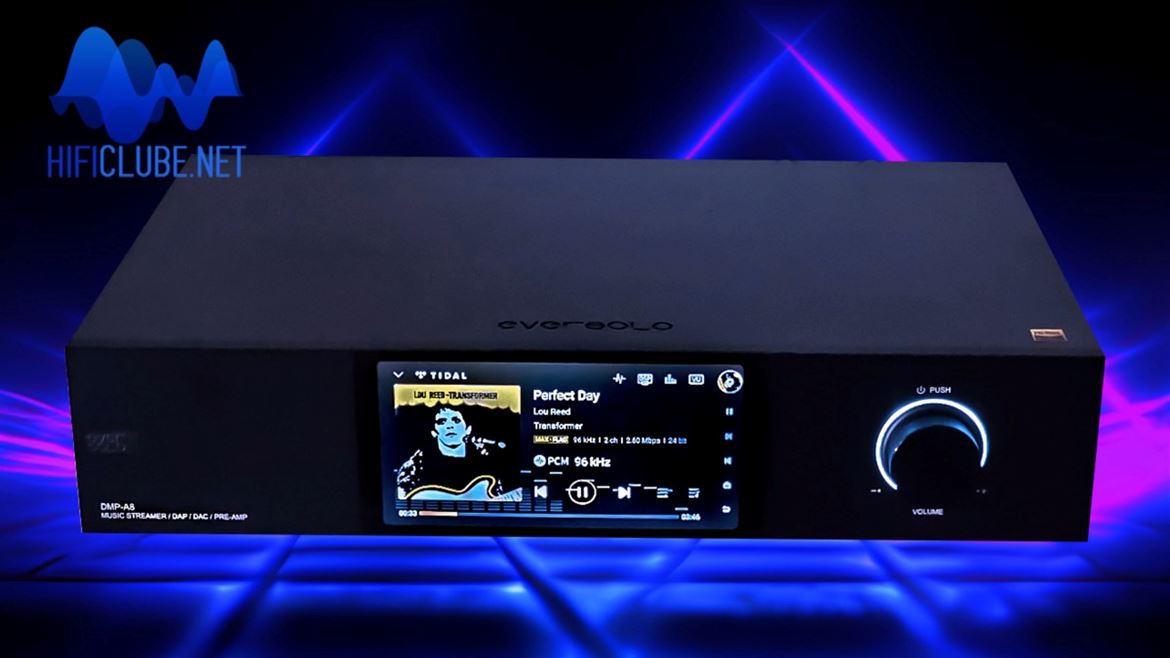
Hey, Laura!
Let me provide a few examples in this already extensive report: In “Hey Laura” from the album “Liquid Spirit” (Tidal PCM96KHz), Gregory Porter’s baritone voice resonates cleanly, clearly, and powerfully, at the centre of a stage populated by instruments (piano, saxophone, drums, bass) that create a rich texture. This texture complements perfectly Porter’s voice and allows us to follow this poignant tale of lost yet enduring love with deep emotion.
The A8 navigates the seas of audio streaming with the grace and ease of a sailboat.
The A8 navigates the seas of audio streaming with the grace and ease of a sailboat. I switched from Tidal to Qobuz and listened to Amy Winehouse’s “Back to Black” (Qobuz 96KHz), which served as a poignant reminder of the late British singer in “You Know I’m No Good.” Indeed, she was good! May she rest in peace.
To test the decoding and rendering of MQA at maximum resolution (352.8 KHz), I listened to Kim André Arnesen’s magnificent “Magnificat” on Tidal, recorded in Norway’s gothic Nidaros Cathedral.
The recording captures the church acoustics perfectly and delivers the individual voices of the young women in the choir standing behind the Trondheim orchestra and, most importantly, the angelic voice of soloist Anita Brevik, all underlined by the imposing cathedral organ.
To test the reproduction of DXD384/768KHz (upsampled), I listened to “Freddie” from Kent Poon’s “The Audiophile Jazz Prologue III”, a superb recording of a jazz session.
To test the reproduction of DSD256/512, I listened to Mahler’s Symphony No. 1 by the Budapest Festival Orchestra directed by Ivan Fischer on Native DSD. The spread and power of the orchestra are remarkable.
I trust you now have a more comprehensive understanding of the acoustic potential of the Eversolo DMP-A8. I don’t have the A6 Master Edition with me for a direct comparison, and the associated system isn’t the same, so I can only speculate. However, I can tell you from memory that the A8 sounds more organic and has more harmonic substance, tonal density, timbral differentiation, and stage volumetric. It is also more dynamic and has a better sense of rhythm.
In simple terms, the A8 performs and sounds better than the A6 Master Edition. Whether the price difference is justified or not depends on your wallet, not your ears.
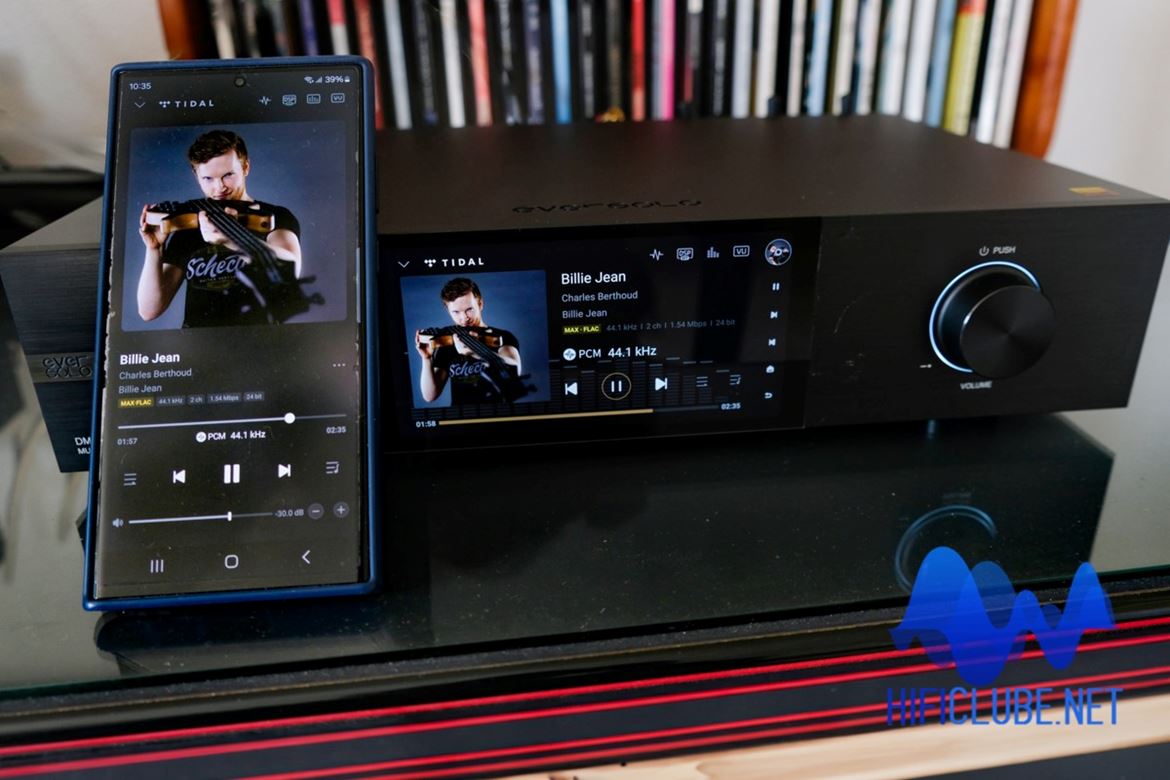
Electronic poetry
Let me end by respectfully paraphrasing verses from a famous poem by a Portuguese poet, who was also a man of science:
- I listened to it from one side,
- From the other, and in front:
- It sounded like a water drop,
- Very transparent.
- I tested it in cold, I tested it in hot,
- Every single time the usual was what I got:
- Neither traces of colouration,
- Nor signs of distortion.
- Mostly music.
Note: inspired by António Gedeão's inclusive and anti-racist poem "Black Woman's Tear."
To say that I am impressed would be an understatement. Hificlube heartily recommends the Eversolo DMP-A8.
As usual, though, it is up to you to make the final call.
Please visit Delaudio or Imacustica to listen to it, or your local dealer for a demo.
Factory Specifications
- Model: EVERSOLO DMP-A8
- Display: 6" LCD touchscreen
- Internal Memory: 4 GB DDR4 + 64 GB eMMC
- DAC: AK4191EQ + AK4499EX
- Audio Processor: XMOS XU316
- Op-amp Chip: OPA1612
- Power Supply: High-quality, low-noise linear + digital dual power supply
- SSD: Supports M.2 NVME 3.0 2280 protocol, up to 4 TB (SSD not included)
- USB-A Port: 2 USB 3.0 ports
- Ethernet: RJ-45 (10/100/1000 Mbps)
- WiFi: Dual-band WiFi 2.4 GHz + 5 GHz
- Playback and DAC Decoding: Supports up to stereo DSD512, PCM 768 kHz 32-bit
- Music Service: Tidal, Qobuz, Highresaudio, Amazon Music, Deezer, Radio Paradise, WebDAV, UPnP
- Streaming:Air Play, DLNA, Tidal Connect, etc.
- Bluetooth Audio Input: Bluetooth BT5.0, supports SBC/AAC
- USB-B Audio Input: Compatible with Windows (10, 11), Android, iOS. Supports up to stereo DSD512, PCM 768 kHz 32-bit
- Optical/Coaxial Audio Input: Supports up to stereo PCM 192 kHz 24-bit, Dop64
- HDMI ARC: Supports up to stereo PCM 192 kHz 24-bit
- Analog Preamp Audio Input: XLR (Balanced) * 1 + RCA (Unbalanced). Maximum Gain +10 dB
- USB Audio Output: Supports up to stereo DSD512, PCM 768 kHz 32-bit
- IIS Output: Supports up to stereo DSD512, PCM 768 kHz 32-bit
- Optical/Coaxial Audio Output: Supports up to stereo PCM 192 kHz 24-bit, Dop64
- Analog Audio Output: Preamp Audio Output: XLR (Balanced) + RCA (Unbalanced)
- XLR Output Audio Characteristics:
- Output level: 4.2 V
- Frequency response: 20 Hz~20 kHz (±0.25 dB)
- Dynamic range: > 128 dB
- SNR: > 128 dB
- THD+N: < 0.00009% (-120 dB) @ No-wt
- Crosstalk: > -121 dB
- RCA Output Audio Characteristics:
- Output level: 2.1 V
- Frequency response: 20 Hz~20 kHz (±0.25 dB)
- Dynamic range: > 125 dB
- SNR: > 125 dB
- THD+N: < 0.00010% (-119 dB) @ A-WT
- Crosstalk: > -121 dB
- Control Method: Mobile App, Touch screen control, IR + Bluetooth remote control
- Power Supply Unit (PSU): AC 110~240V 50/60Hz
- Rated Power: 16W
- Dimensions: Width 388 mm * Length 248 mm * Height 90 mm
- Price: €1980

